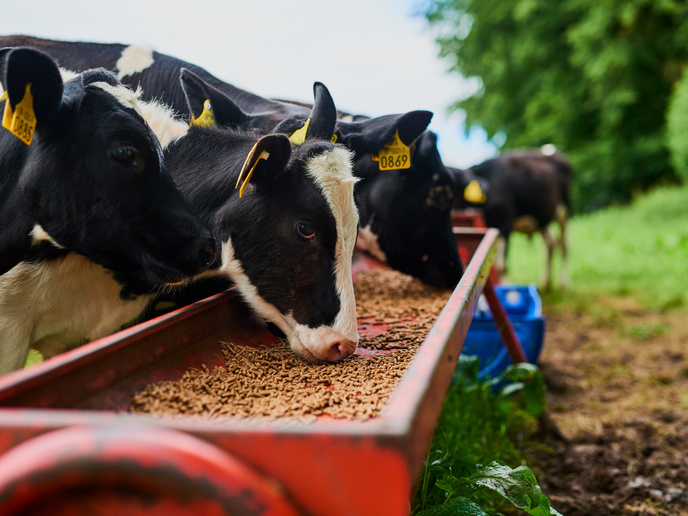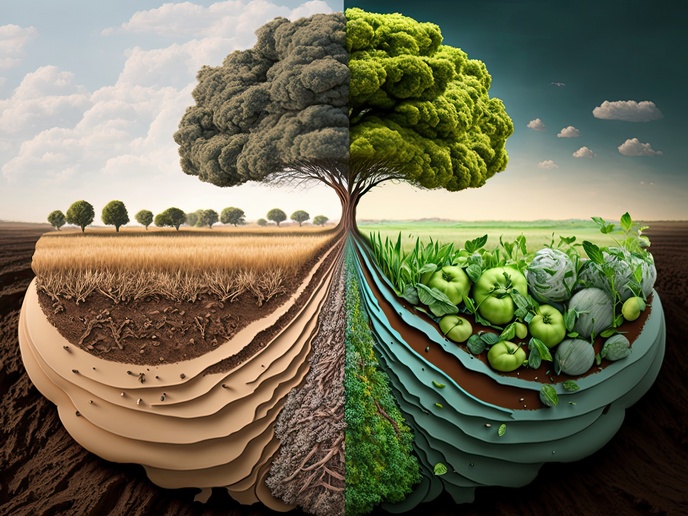Novel nanotech solutions boost cattle nutrition
Sustainable and cost-efficient livestock production is an essential component of any competitive food industry. A key challenge facing all farmers is ensuring the health of their cattle, so they can maximise their return on investment. Good nutrition plays a critical role here, helping to reduce disease outbreaks and produce healthy animals. Indeed, nutritional deficiencies are a leading cause of illness, and thus loss of livestock.
Encapsulating active molecules in cattle feed
The NanoFEED(opens in new window) project, which was supported by the Marie Skłodowska-Curie Actions(opens in new window) programme, sought to apply nanotechnology to improve the functionality and nutritional value of cattle feed. By encapsulating active molecules in nanoscale protective, pH-sensitive shells, the team hoped to demonstrate that these bioactive compounds could be delivered in feed directly to the small intestine of the animal, where they could then be fully absorbed and utilised. “We wanted to show that precision nutrition like this could not only increase feed utilisation, but also reduce nutritional disorders and even reduce ammonia emissions by minimising negative fermentation in the animal,” explains NanoFEED project member Rajský Matúš from the National Agricultural and Food Centre(opens in new window) in Slovakia. In order to achieve project goals, the project established a training network, to enable young researchers to work across different research institutes and commercial settings. A key goal of this was to close the gap between academia and industry, and help to bring innovation into the marketplace. “The project created a space for sharing knowledge and experiences, through the international exchange of scientific expertise,” says Matúš. “At the same time it also offered space for the development of innovation in encapsulation technology.”
Nutritional potential of novel feed concepts
The project team encapsulated feed supplements into polymeric nanoparticles(opens in new window) and microparticles, designed to release their active compounds in the small intestine. These were then given to cows surgically fitted with portlike-devices that gave researchers direct access to the digestive system. These devices, called cannula, are currently in the process of intellectual property protection. The trials revealed the nutritional potential of these new nano-encapsulated feed concepts, through significantly reducing the degradability of the feed before it reaches the small intestine. For example, the team found that a cow consuming 1 000 g of untreated soy protein would typically utilise 272 g in their small intestine. Meanwhile cows consuming encapsulated soy protein were able to utilise 616 g in the small intestine. “We made advances in two technological directions: encapsulation by spray drying, and encapsulation through high pressure and temperature,” adds Matúš. A utility model application – similar to a patent application – has been submitted for the novel spray drying encapsulation technique.
Functional ingredients for livestock production
Next steps include scaling up the nanoencapsulation technology from pilot to commercial capabilities. The project’s success has led to follow-up initiatives, including a project on optimising feed production processes at the national level in Slovakia, which began in July 2023. “Further research will help to translate the outcomes of this project into functional ingredients for livestock production,” says Matúš. “This will contribute to safe animal nutrition, and a healthier food supply chain.” The project has also helped to boost the career development of early-stage researchers through secondments abroad, and ensured that this critical issue remains a focus of research for years to come.







